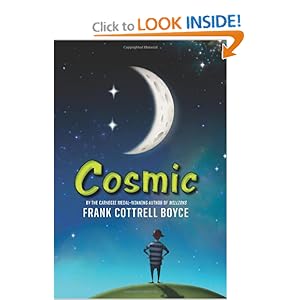“This is my secret. I would call it a hidden talent, but talents are supposed to be happy possessions, something to rejoice over and nurture and maybe even gloat about. My secret skill has brought me nothing but pain. At any given moment I can hear anything anybody says about me., anywhere in the world.”
 I like Margaret Peterson Haddix’s books. I enjoyed The Shadow Children series, The Missing series, and her stand alone novels such as Leaving Fishers or Double Identity. Claim to Fame is another good, solid entry into Ms. Haddix’s catalog of short but thoughtful YA fiction.
I like Margaret Peterson Haddix’s books. I enjoyed The Shadow Children series, The Missing series, and her stand alone novels such as Leaving Fishers or Double Identity. Claim to Fame is another good, solid entry into Ms. Haddix’s catalog of short but thoughtful YA fiction.
The premise is good: child actress Lindsay Scott finds that she can suddenly “hear” anything anyone says about her anywhere in the world. She’s about to go crazy from all the babble and gossip, good, bad and indifferent, when she finds a place where she can escape into silence. But now after five years as a recluse, things are changing again. Lindsay must find a way to deal with her “gift” as an adult and not a self-absorbed teenager.
Of course, that’s the key. Don’t we all have to find a way to use the gifts and cope with the disabilities we have without being self-centered, attention-seeking narcissists? It’s a part of growing up, and at 52, sometimes I’m still working on it.
One of the urchins says she wants to be famous. (She plans to achieve this fame on Broadway.) I told her earlier today that fame as a goal wasn’t really worth the effort. She asked if I would be ashamed of her if she became famous, and I told her that I’d rather she had a goal to become excellent. If she becomes an excellent artist or actress or engineer or sales clerk and becomes famous as a by-product, I’d be proud of her. But fame by itself is rather empty. Ask Lindsay Scott, fictional celebrity, who hears all about herself every time she leaves her house in an echo chamber that points out all of her failings, insecurities, and vulnerabilities incessantly. Fame ain’t all it’s cracked up to be.
Margaret Peterson Haddix on the inspiration behind Claim to Fame.









